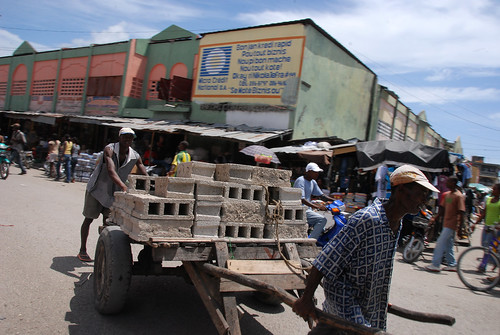 Population: 9.7 million
Population: 9.7 million
Native greeting: Kijan ou ye? (How are you?)
Capital: Port-au-Prince
Local Currency: Haitian Gourde
Overview
In the early 17th century, the French established a presence on Hispaniola, and in 1697, Spain ceded the western third of the island to the French, which later became Haiti. The French colony, based on forestry and sugar-related industries, became one of the wealthiest in the Caribbean, but only through the heavy importation of African slaves and considerable environmental degradation. In the late 18th century, Haiti's nearly half million slaves revolted under Toussaint Louverture. After a prolonged struggle, Haiti became the first black republic to declare its independence in 1804.
Haiti is now the least-developed country in the Western Hemisphere and one of the poorest in the world ranking 146th of 177 countries in the UN's Human Development Index.
Inappropriate economic policies, political instability, a shortage of good arable land and environmental deterioration are factors attributed to the economic stagnation of the country. Severe deforestation makes the country extremely vulnerable to hurricanes, droughts, floods and other disasters that often times paralyzes the entire population.
Heifer in Haiti

Year Heifer Started: 1949
Families assisted in 2010: 1,135
Livestock interventions: Beef cattle, poultry, dairy goats and vegetable seeds
Technological inputs: water filtration and purification
Issues addressed: Adult literacy, poverty, food security, soil erosion, gender equity and water contamination
Established in 1999, Heifer Haiti works in seven of the ten departments in the country partnering with communities providing livestock, seeds and training to improve their living conditions empower them to brake the never-ending cycle of poverty and despair.
The program’s approach is characterized by strengthening small farmer organizations through agroecology and literacy training. Livestock, seeds and training are the main resources present in all of Heifer Haiti’s projects.
Current project work takes place in six departments in the country located in the following regions: north/northeast, Artibonite, west and south/southeast.